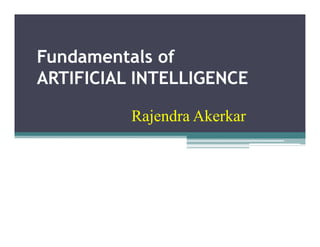The document provides an overview of artificial intelligence and knowledge-based systems. It discusses definitions of intelligence and AI, as well as knowledge representation schemes like logical, procedural, semantic network, and frame-based representations. The key components of a knowledge-based system are described as the knowledge base, which represents problem domain knowledge, and the inference engine, which uses reasoning techniques to solve problems. Ideal features of knowledge-based systems include efficient problem-solving using knowledge, heuristics, and eliminating unproductive solutions.




























































